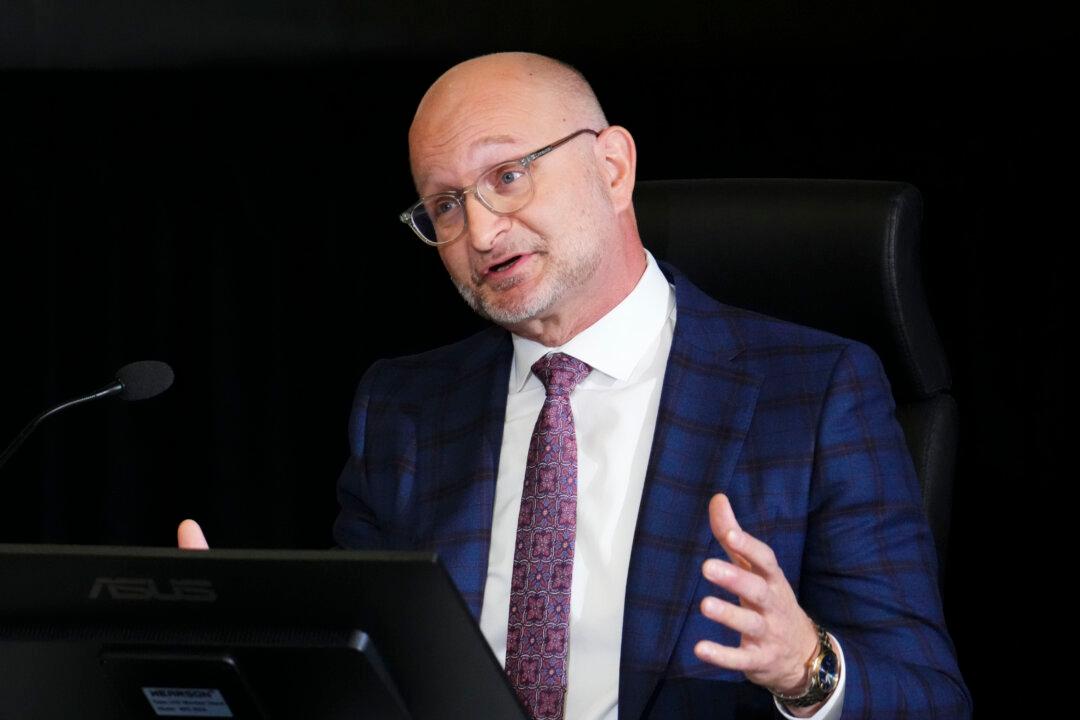Justice Minister David Lametti told a fellow Liberal MP on Feb. 23 that the government revoked the Emergencies Act because the NDP and senators were not supportive as there was no longer any emergency, according to text messages entered as evidence at the Public Order Emergency Commission on Nov. 23.
“I am glad we ended the EA [Emergencies Act], but it would have been more appropriate if we waited until Friday? 44 hours after the vote seems unseemly,” wrote Liberal MP Greg Fergus in a text message to Lametti.
“No, we needed to stay ahead of the NDP and senators were saying that they would vote against based on their view that there was no longer an emergency,” Lametti wrote back.
“D’accord. Thank you for answering my very political question,” responded Fergus.
Prime Minister Justin Trudeau’s government invoked the Emergencies Act on Feb. 14 to deal with cross-country protests and blockades demanding the lifting of COVID-19 restrictions.
The invocation received the backing of the House of Commons on Feb. 21, with the minority Liberals receiving NDP support.
The government then revoked the declaration of emergency on Feb. 23, before the Senate had a chance to vote on it.
Sen. Marilou McPhedran said back in April that some of her colleagues and MPs had been working on gathering signatures at the time to begin the process of having the public order emergency repealed.
Another series of text messages on the issue of support for the Emergencies Act in the Senate was also entered as evidence at the commission.
“Our count as of right before the announcement was 51 declared yes, 22 declared against and 18 undecided (which likely would have split half and half),” wrote Sen. Marc Gold’s chief of staff on Feb. 23.
Lametti noted those messages to put in context his own comments about not having support from the Senate.
During his Nov. 23 testimony at the commission, Lametti rejected a suggestion that the government would have kept the Emergencies Act in place longer had it not been for the concern that they wouldn’t have the support of the NDP and the Senate.Threshold
Lametti fielded many questions from counsels representing different parties on the issue of the legal threshold to invoke the Emergencies Act, and in his role as attorney general he declined to answer many of them on the grounds of solicitor client privilege.
Federal officials have provided different rationales for invoking the act during testimonies before the inquiry in recent days, but the type of legal advice provided by the attorney general to the government on the threshold is key to the issue at hand.
To avoid discussing it, Lametti said a number of times that Justice Department lawyers would be filing legal arguments with the commission to address the matter.
Those questioning the invocation of the act have insisted on the fact that the Canadian Security Intelligence Service (CSIS) had assessed that the protests of last winter didn’t meet the definition of a threat to national security as outlined in the CSIS Act.
The declaration of a public order emergency under the Emergencies Act is predicated on there being a threat as defined by section 2 of the CSIS Act.
Lametti said that was immaterial, because the government retains the decision-making power.
“What Parliament did not do with the creation of the Emergencies Act was delegate the decision-making to CSIS,” he said. “The decision-making power is always in the hands of cabinet.”
Section 3 of the Emergencies Act sets out other conditions for declaring an emergency, such as in the case that the situation supersedes the ability of provinces to address it and that it cannot be dealt with under normal authorities.
Lametti was presented with a speech given in 1987 by then-defence minister Perrin Beatty, the sponsor of the bill that became the Emergencies Act.
Beatty told the House of Commons that the definition of “threats to the security of Canada” as contained in the CSIS Act “do not stand alone” with regard to the Emergencies Act.
He said they must be read in conjunction with the definition of a national emergency in the bill (section 3) and with other provisions.
“In other words, before the Government can declare a public order emergency under Part II, the emergency situation must correspond to the definition of a national emergency as stated in the preamble,” said Beatty, referring to this as the “double test.”
Addressing Lametti, Canada Constitution Foundation counsel Janani Shanmuganathan said: “So what I’m saying Minister Beatty is saying here is that you have to one, meet the threats to the security of Canada, that’s the first part, but also meet the definition of a national emergency under the preamble, that’s what he’s referring to as this double test.”
“That’s certainly your point of view,” replied Lametti.
The government’s assertion that the authorities didn’t have the means to deal with the situation without the Emergencies Act has been brought into question a number of times by testimonies and evidence from senior police officials.RCMP Commissioner Brenda Lucki told the chief of staff of the public safety minister on Feb. 13 that not all tools had been exhausted.
Ottawa police interim chief Steve Bell said on Oct. 24 that the protest in Ottawa would have been cleared without the Emergencies Act, an opinion also shared by OPP Chief Supt. Carson Pardy on Oct. 21. Pardy was involved in preparing the plan to clear the Ottawa protest.





